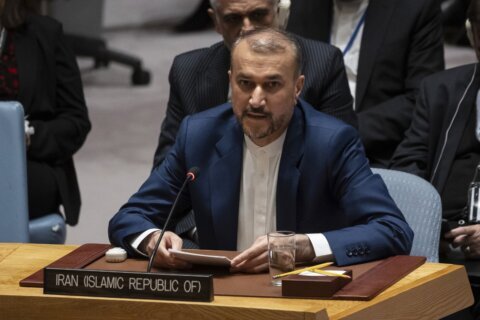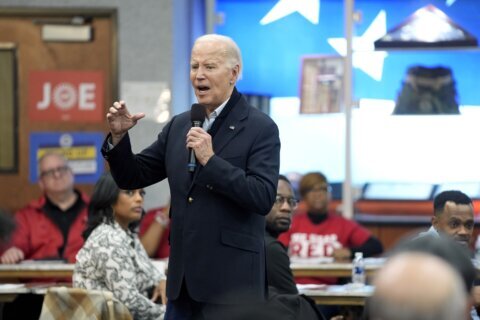BAGHDAD (AP) — In Baghdad’s Green Valley primary school, children wearing face masks waited in long lines early Monday to pass through a specially constructed disinfection tunnel before entering their classrooms.
A mist of disinfectant was sprayed as each child passed through. On the other end, deputy school principal Hind Ibraheem waited, handing out squirts of hand sanitizer to each student.
“I don’t know how I will maintain social distancing,” she sighed. “There are 1,300 students in this school, with only 30 classrooms!”
Across Iraq, students returned to classrooms Monday for the first time in a year and a half following the prolonged closure caused by the coronavirus pandemic — a closure that compares only to the times of war and turmoil.
The pandemic break with in-person schooling in Iraq has been among the longest in the world, affecting some 11 million students nationwide. Iraq’s Ministry of Education provided learning in the interim through an online platform, but the focus has mostly been on students in higher grades taking their final exams.
According to the World Bank, learning levels in Iraq — a country ravaged by decades of conflict and government negligence — are among the lowest in the Middle East and North Africa and are likely to decline even further because of the impact the pandemic.
With schools closed over 75% of the time since February 2020 and opportunities for remote learning limited and unequal, the World Bank warned in a report last month that “students in Iraq are facing more than a ‘lost year’ of learning.”
Online teaching in Iraq faced many challenges, including poor internet connection, prevailing and often daily power outages, and many families’ dire economic conditions.
Haider Farouk Abdel Qader, a spokesman for Iraq’s Ministry of Education, said the government decided to reopen public schools after infection levels dropped following the arrival of vaccines. Iraqis have to resume their lives, and part of life is education, he said. Private schools reopened last month.
Iraq has registered just over 2 million infections and 23,170 deaths so far during the pandemic. Lately, the numbers of new infections have slowed down, with an average of 1,000 to 1,500 a day — down from a record average of over 12,000 in July.
The academic year starting Monday will include four days of in-school attendance a week — with one day left for remote learning — and measures such as obligatory vaccination or weekly PCR tests for teachers, mandatory face masks and social distancing measures.
But Iraq’s public schools are chronically underfunded and overcrowded, making them ill-equipped to properly enforce safety measures. Abdel Qader said schools were given the option to run multiple shifts.
At the Wadi al-Akhdar, or Green Valley, school in the impoverished Baghdad suburb of Sadr City, the words “SMILE TO LIFE” were painted in bright colors on a wall at the end of a school corridor.
But there were few smiles as dozens of students waited outside classrooms and in the school’s back yard, only to be told they have to go home because there wasn’t room for them.
“We’ll try to move them to another day,” deputy principal Ibraheem said, adding that the school is building eight new classrooms to expand capacity.
“It’s not enough, but Allah Kareem,” she said, Arabic for God is gracious, or God will provide.
Still, many parents were relieved to see their children back in school.
Firas Abu Mohammed, who was buying stationary for his four kids at a market on Baghdad’s famous Mutanabbi Street, said that being in classrooms was much better than online learning.
“I’m optimistic,” he said. “I hope to get rid of this damn pandemic.”
Copyright © 2024 The Associated Press. All rights reserved. This material may not be published, broadcast, written or redistributed.







